The history of mosque architecture in Iran
Archaeologists believe that the antiquity of the circular dome constructions dates back to pre-Islamic eras in Iran, as it can be seen in the construction of palaces such as the Ardashir I Palace in Firozabad and the Sarvestan Palace both related to the Sassanid era. The use of these domes, regardless of the coverage of the large halls, brings beauty and glory to the exterior view

The use of Geometry in Iranian Mosques
The Iranian mosque is an unmatched manifestation of geometry. Because the rectangular courtyards by triangular shapes eventually ends up in a circular dome. The apogee of using geometry can be seen in Sheikh Lotfollah Mosque in Isfahan, which, in addition to its glorious beauty, also comes with its constructive scientific perception. According to Professor Arthur Upham Pope, the famous contemporary Iranologist in his book "A survey of Persian art ", there is not even a nuance weakness in the geometric calculations of the Sheikh Lotfollah Mosque, and the dimensions also the proportions are carefully observed
However, Iranian mosques have undergone many changes throughout history, with many decorations being added or traditional techniques have been superseded by recent ones. For better comprehension, it's better to analyze Jameh Mosque of Fahraj and the historic Jameh Mosque of Damghan, which both are of the oldest mosques in Iran. There are no trace of Mihrab, dome, stone inscriptions , tiling or other decorations that later became common in mosque construction. Rather, what is most felt walking into these mosques is the simplicity and silence

The mosque's architecture in history
In the Abbasid period, mosques were designed with open courtyards and columned porches that exemplified Arabic-style architecture. The monolithic clay bricks and pillars were mostly used in these buildings. Gradually, major changes were made to the mosque and bricks were used instead of clay bricks. An important feature of the mosques during the early Islamic period was the ceiling of the mosques which was completely flat and minarets were built outside or next to the mosque, and Kufi stone inscriptions were used to decorate the walls. The exemplar of this period in Iran is the historical Jameh mosque of Damghan that dates back to the second century AH and is the oldest mosque in Iran.During the Buyid dynasty period, there was a return to the Sassanid architecture and the four-porch mosques were rebuilt, with massive columns and long porches. Plaster was used to decorate the buildings and the main decoration of the mosques in this period was done in a variety of colors. The mosques of this period can be referred to the Jameh Mosque of Nain. The mosque still is used, and has the oldest minaret in Iran.
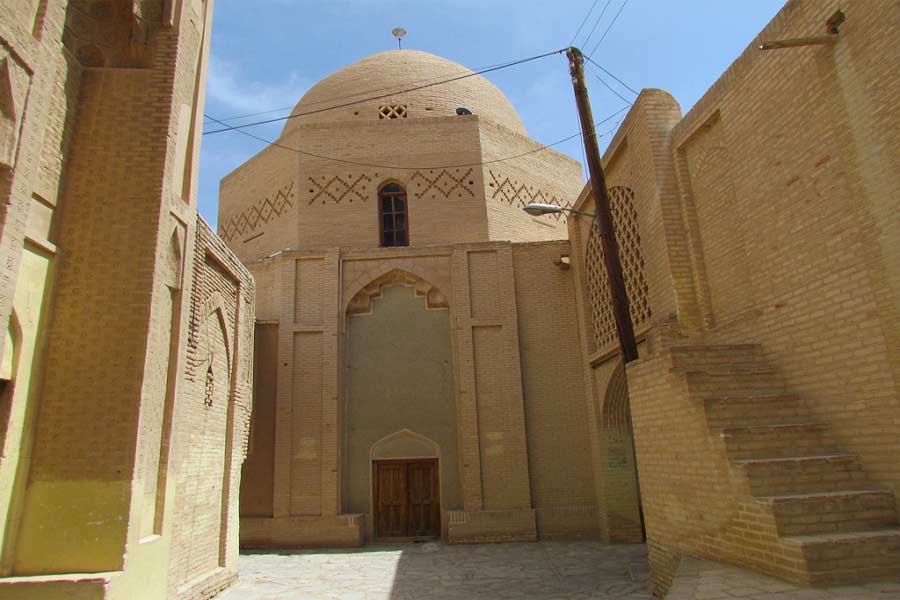
Modesty, strength and beauty are the distinct futures of mosques structures during the Seljuk period. Despite of nearly 4 centuries gap with the Sassanid era, one can still see the Sassanid four-porch plan. Brick buildings and decorations include Indian lines and motifs stamped on brick, plaster, mosaic tile, and inscriptions in Kufic script and manuscript. Amongst the mosques of this period, the Jameh Mosque of Ardestan can be mentioned.

During the ILkhanate era, the mosques maintained their traditional Seljuk style, but the Mongols tend to build huge buildings with large domes and soaring towers to show their mightiness, and to enhance the aesthetics of the building, the facades of the building were slender, with tall frames and pointed crescent. At this time, the use of glazed and non-glazed brick ornaments, plaster and brick pieces in mosaics, blue tiles with beautiful floral and shrub designs, and magnificent Kufi inscriptions with ornamental strips were common. The Jameh mosque of Varamin and Soltaniyeh dome are best examples for Religious monuments and mosques of this period.
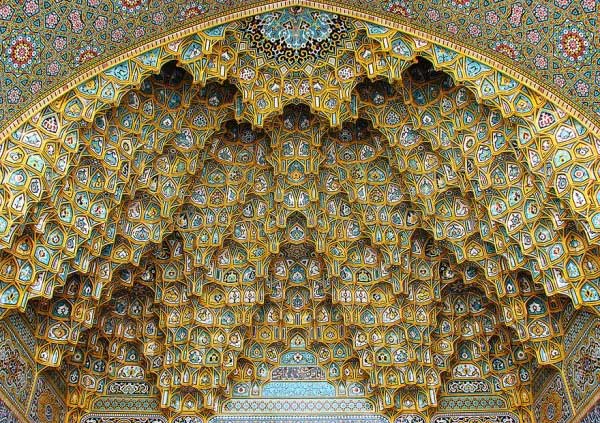
The tradition of building mosques in the Timurid period continued in the same way as before. The buildings are often four-porch with tall verandas and porches adorned with beautiful Mogharnas, and magnificent tile mosaics. The onion domes are the distinct feature of the mosque structures during this period .Also the perfection of the use of color in architecture can be seen as the, exemplars of which can be seen in Kufic inscriptions in gold in the context of blue tiles. Goharshad Mosque is the most famous mosques of this period.
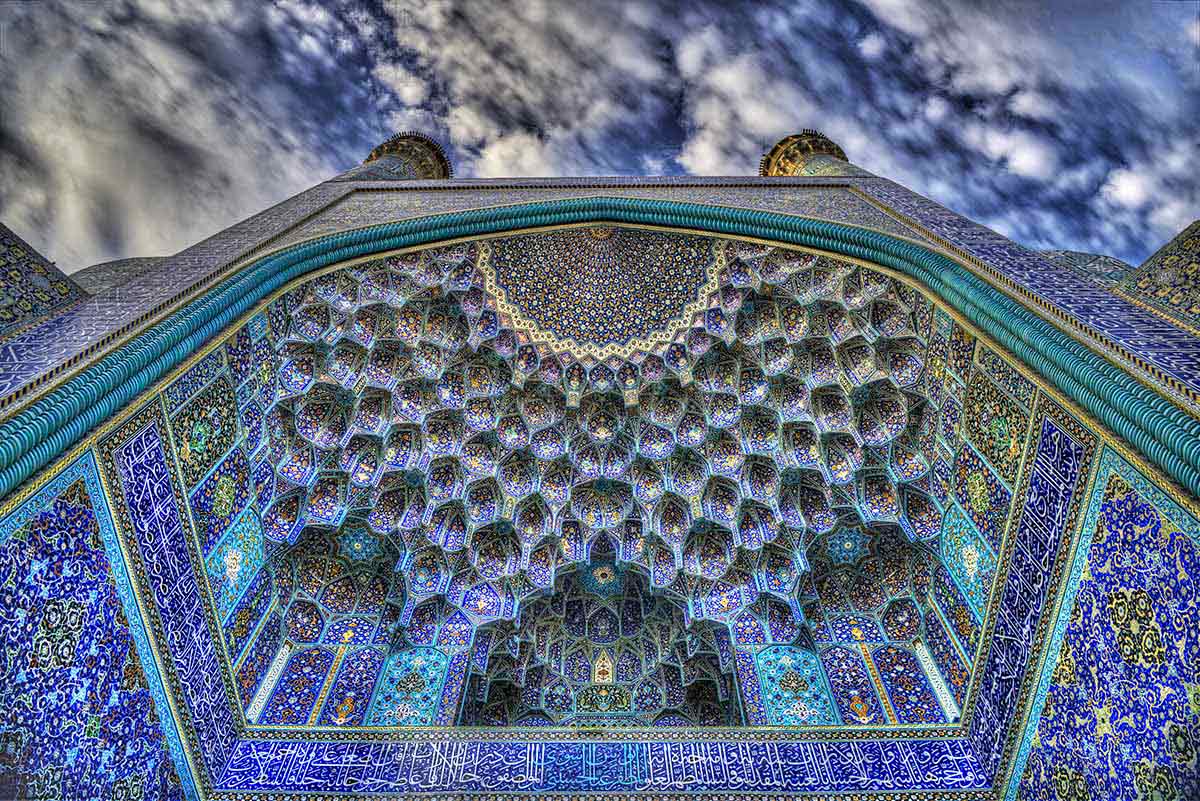
The Safavid monuments still have the four-porch plan, with attention being paid to the construction of large verandas. Glazed tile, mosaic and seven-color tile are used to decorate the exterior and interior walls of the building, arches, minarets, domes and Mihrab. Brilliant Naskh and Thuluth manuscripts on blue tiles and the light entering through the windows embedded in the stem of the dome gives a spiritual state to the mosque.
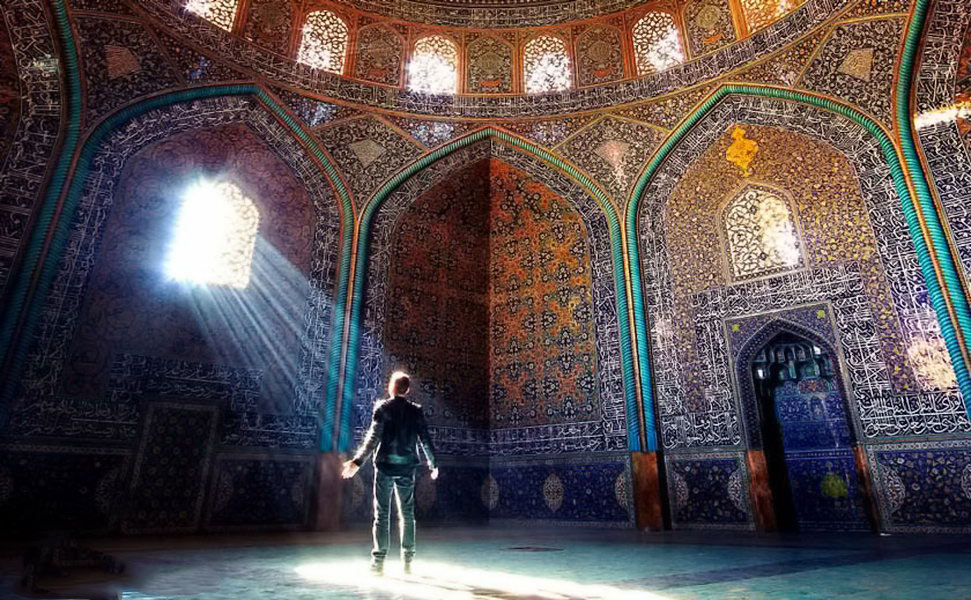
Architectural example of this period includes the Mosque of Naghshe Jahan which was built by Shah Abbas and is considered as the crown jewel of buildings in Isfahan. The Qajar period is the period of cadence in Iranian architecture. Compared to the beautiful buildings of the Safavid period, no building could be countervailed. The most prominent buildings of this period belong to Fath-Ali Shah Qajar, which is an imitation of Safavid buildings and most of the important ornaments were adapted from European art. The Sepahsalar Mosque and School is one of Tehran's famous historic mansions. The dominant spirit on Iranian mosques has been attracting tourists for many years to show their admiration for this buildings. The tile and brick of mosques had been heard the sound of Adhan and welcomed many travelers for many years
.jpg)
The most beautiful mosques in Iran
Beautiful, amazing, glorious, the arches, mosaic tiles, circular domes, the structural features of pre-Islamic architecture in Iran. The Iranian architecture dates back to 5000 BC, and had a tremendous impact on the architecture of India, Turkey, and Tajikistan until Zanzibar. Supreme Iranian art, in the true sense of the word, has always been its architecture." The supremacy of architecture applies to pre- and post-Islamic periods, "said Arthur Pope, a pioneering American expert on Iranian art. Various buildings and collections, such as mosques, shrines, markets, bridges, and palaces, have survived from ancient times and from ancient times. The Iranians knew how to build tall buildings with massive internal space and their places of worship have always been in harmony with the ideas and nature surrounding them.

The architecture of the mosques in Iran varies from one region to another, due to geometric structures, materials, and styles specific to each location. These mosques often have very complex structures in which color variations, tiles, and symbolic designs are used. The dome of the mosque shines with a reflection of the sun, like a turquoise on the roof of the mosques and the travelers who enter Iran from the Silk Road and pass through this road are able to see these glowing domes a few miles away. Modern fashion mosques throughout the world have been built over the past decade, which is absolute masterpiece of art, But these mosques are not as valuable as the mosques in the Muslim countries. Iran has a collection of the most beautiful historical mosques
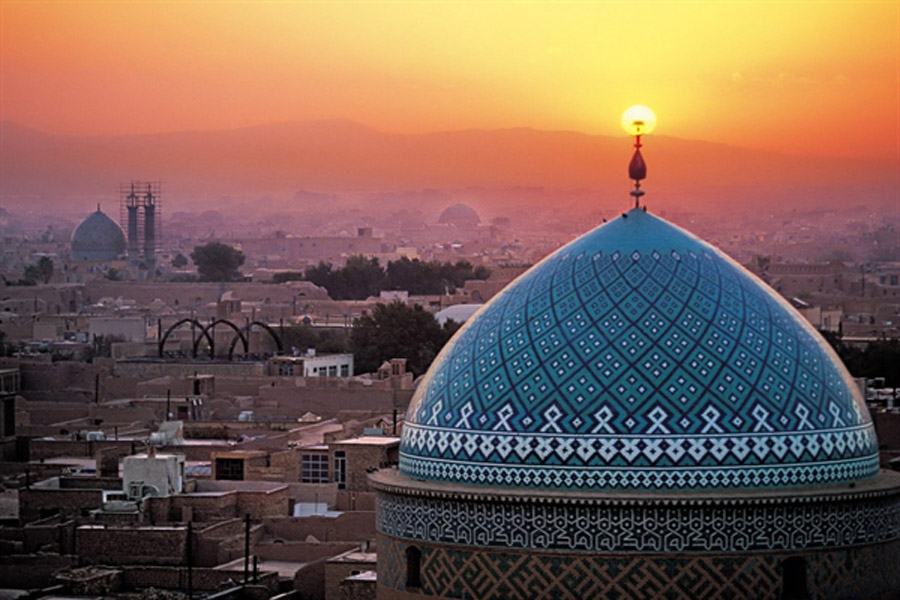
Shah Mosque or Imam Mosque, Isfahan
The Imam Mosque, located on the southern side of the Isfahan Square, is an excellent example of Islamic architecture in Iran.This immortal masterpiece, along with the Naghsh-e-Jahan sq, has been recorded on the UNESCO WORLD HERITAGE SITE .This mosque belongs to the 6th century AD.The reason for its splendor is due to the tiled mosaic,Glazed tiles,Beautiful handwriting(Iranian Nastaligh handwriting) on the walls Which has been used by Iranian architecture professors. The distinctive feature of each mosque is its minaret.This mosque has 4 minarets.Acoustic properties and reflections at the central point under the dome are a fun interest for many visitors, as the ingenuity of the architects when creating the dome, allows the Imam to speak with a moderate voice and always be heard Clearly by everyone inside the building.The architecture of these mosques is very complex and has many Ivans and courtyards.The photo of this mosque is printed behind the 20000 Iranian Rial banknote.
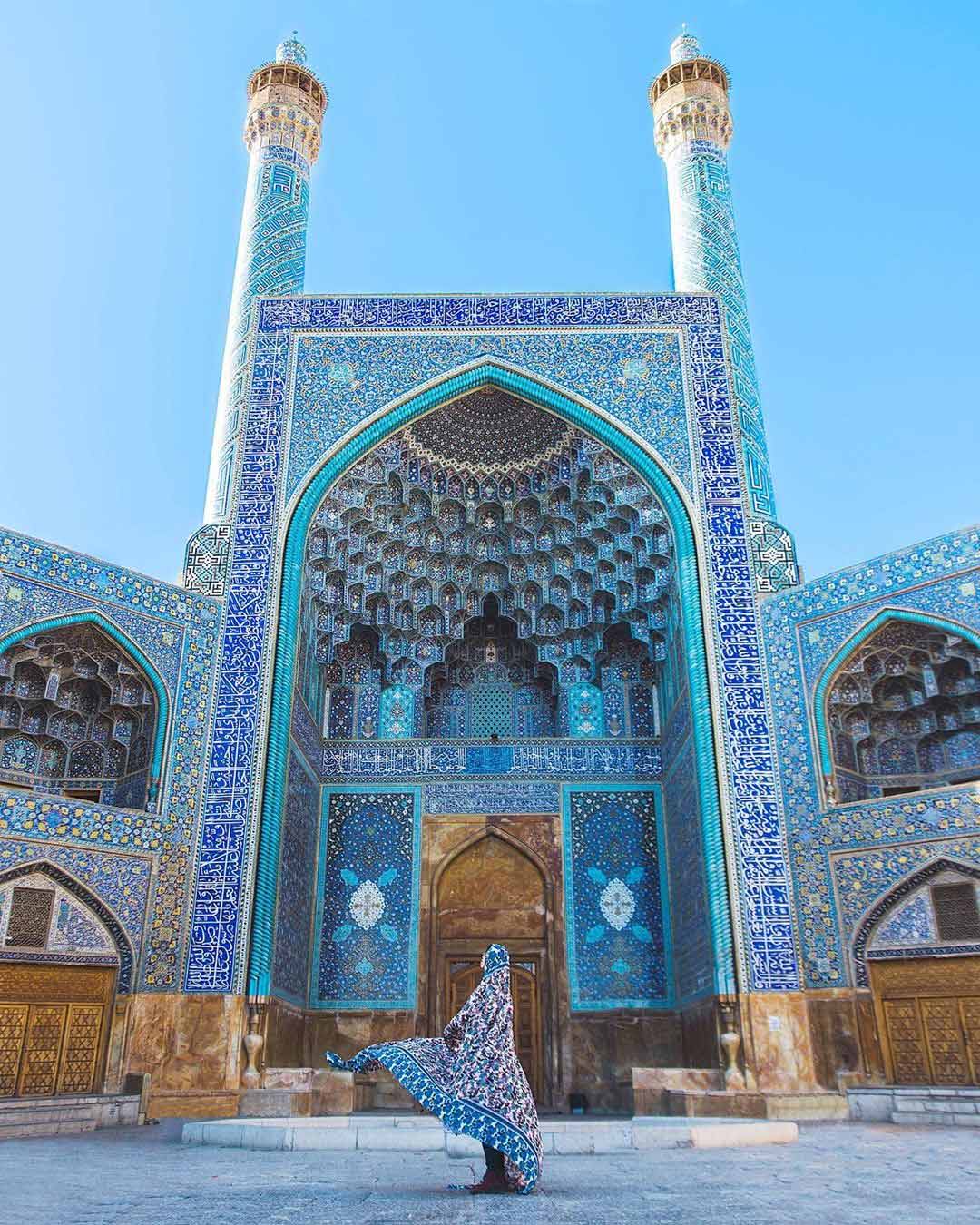
Jame Mosque of Isfahan
Masjed-e Jame of Isfahan represents a condensed history of Iranian Architecture. It displays architectural styles of different periods in the country's Islamic architecture. The mosque was built in the four-iwan architectural style placing four gates face to face. It later became a prototype for mosque and dome design. Located in the historic centre of Isfahan it is the oldest Friday mosque in Iran. It was developed from the 9th century onwards.This beautiful mosque was recorded on the UNESCO WORLD HERITAGE SITE
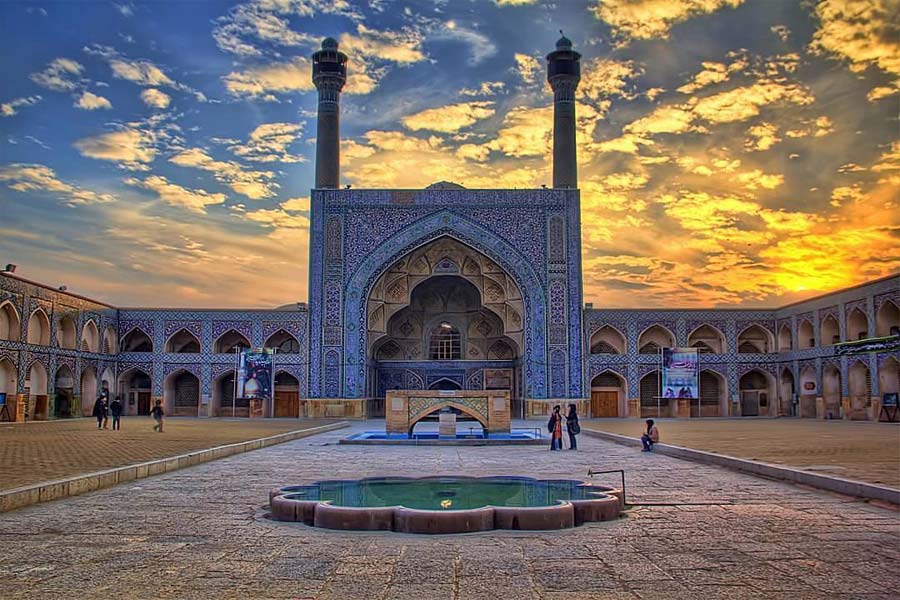
Sheikh Lotfolah Mosque, Isfahan
This mosque is built as a private mosque of the royal family, that’s why it does not have any minaret.The designs done by calligraphy and tiling in this mosque is more beautiful and better than other Persian and Islamic works.The true charm of the interior of the building results from its perfect symmetry. The prayer room is built on a square plan which transforms into a circular dome by means of four large squinches that extend to ground level and are paired on four sides of the square by four large arches of the same size Dimension than those that frame the squinches

Nasi al Mulk Mosque or Pink Mosque Shiraz
This mosque was built during the Qajar period.In this mosque, colored glass is used extensively as an exterior decoration.This mosque is unique for its tile work and its architecture. The construction of the mosque began in 1293 AH. And finally ended in 1305 AH. By Mohammad Hassan Me'mar and Mohammad Reza Kashi Paz Shirazi.The mosque greatly uses colored glass in its façade, and it has other traditional elements such as Panj kaseh-i (five concaves) in its design. It is also named in popular culture as Pink Mosque because of the use of beautiful pink colored tiles for its interior design
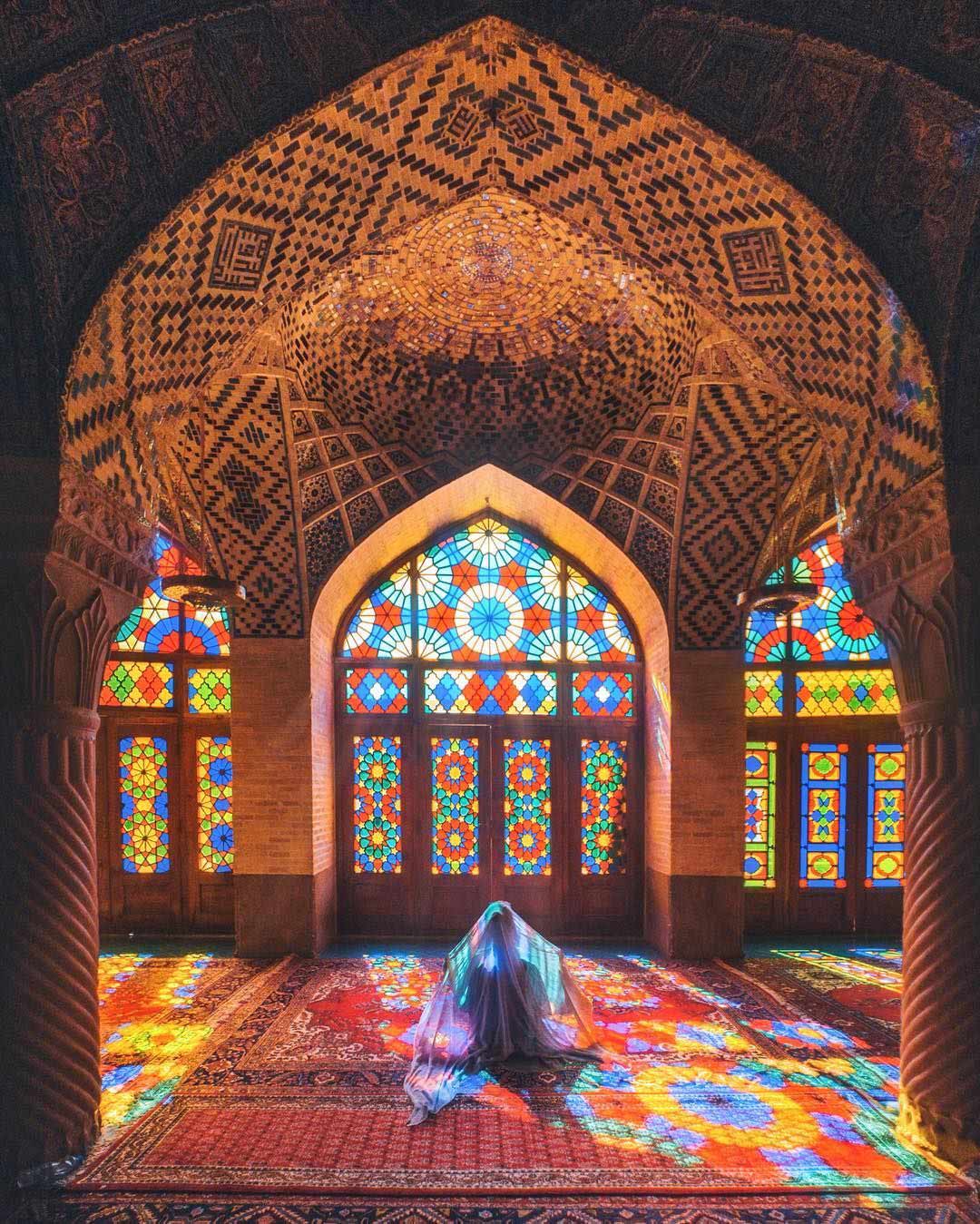
Jame Mosque of Yazd
Jameh Mosque of Yazd is the main, congregational mosque of Yazd. The original building dates back to Sassanid Era. First, the mosque was constructed on the site of a Sassanid fire temple. It was vastly renovated from 1943 to 1986
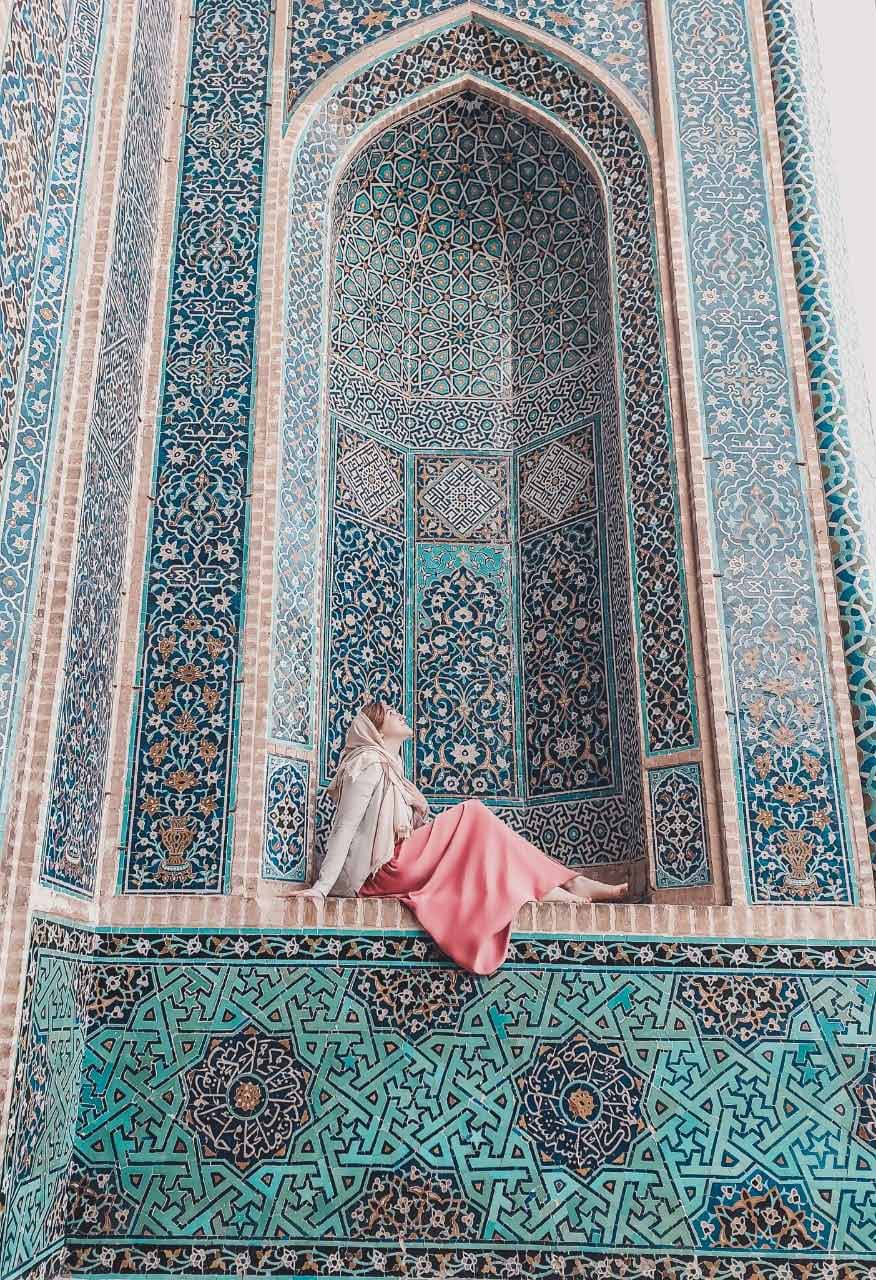
The origin of the Jameh Mosque of Yazd dates back to 800 years ago. First, the mosque was constructed on the site of a Sassanid fire temple by the command of A’la Al – Dowleh Kalanjar. After 200 years, the mosque was renovated. The main building of the present construction is built by the order of Seyyed Rokhn Al Din Mohammad Qazi. One of the highlights about this mosque is that the oldest dated tile work existing in the building is in the eastern entrance vestibule and dates back to 1364 A.D. This 19th-century mosque is still in use. It was built under the order of Ala’oddoleh Garshasb in the Al-e Bouyeh Dynasty. It was vastly renovated from 1943 to 1986
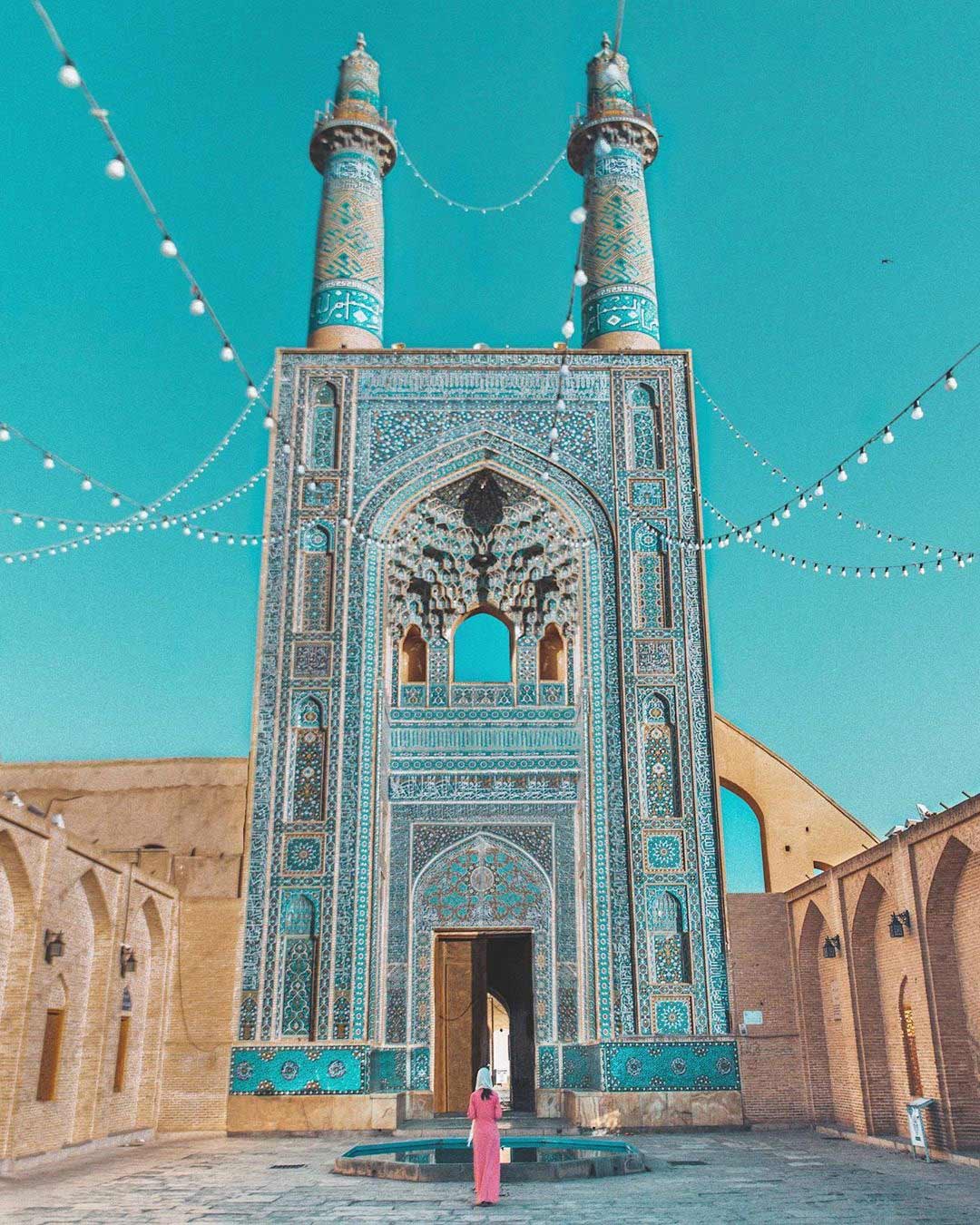
Sheikh Safi ol Din Mosque, Ardabil
Built between the beginning of the 16th century and the end of the 18th century, this place of spiritual retreat in the Sufi tradition uses Iranian traditional architectural forms to maximize use of available space to accommodate a variety of functions (including a library, a mosque, a school, mausolea, a cistern, a hospital, kitchens, a bakery, and some offices). It incorporates a route to reach the shrine of the Sheikh divided into seven segments, which mirror the seven stages of Sufi mysticism, separated by eight gates, which represent the eight attitudes of Sufism. The ensemble includes well-preserved and richly ornamented facades and interiors, with a remarkable collection of antique artefacts. It constitutes a rare ensemble of elements of medieval Islamic architecture.This beautiful mosque was recorded on the UNESCO WORLD HERITAGE SITE
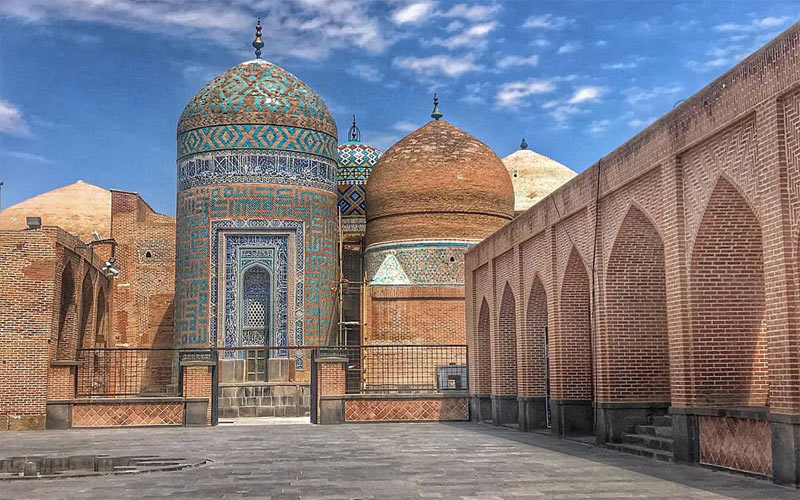
Definitely, Iran is one of the best destinations for those who want to soak up the atmosphere and beauties of the mosques. By stepping in the Iran mosques, the eyes are dazzled by vibrant colors spread in all elements, fine Muqarnas, colorfully stained glasses, graceful and elegant tile works, magnificent domes, and eye-catching Sahns and Iwans. By visiting Iran mosques, discover the glory and beauty of Iranian architecture.

Iran is different from anywhere else. The expansion of the tourism industry has seen many destinations reach saturation point, which has led people to seek new destinations that remain truly different from where they came. Iran provides that. Whether it is the culture and traditions that have developed over 5,000 years, some of which are national and some of which remain regional, all of them remain for tourists to engage with, be challenged by and learn from. Iran is a great country. Iran, whilst unique, also has a story that can appeal to everyone as it touches on so many aspects of human history. Whether it’s through the creation of some of the earliest civilizations on earth, the emergence of the Persian empire and its epic battles with Greek and Roman empire, its role in the Golden Age of Islam with its advances in science, mathematics and in the arts, such as the emergence of Rumi and Hafez to the successive invasions it has seen to the modern-day creation of an Islamic Republic